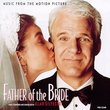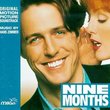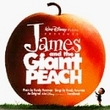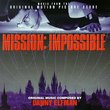| All Artists: Chicago Brass Ensemble Title: Fireworks for Brass Members Wishing: 0 Total Copies: 1 Label: Proarte Release Date: 2/1/1993 Genres: Special Interest, Classical Styles: Marches, Opera & Classical Vocal, Chamber Music, Forms & Genres, Suites, Historical Periods, Baroque (c.1600-1750) Number of Discs: 1 SwapaCD Credits: 1 UPC: 015095080523 |
Search - Chicago Brass Ensemble :: Fireworks for Brass
 | Chicago Brass Ensemble Fireworks for Brass Genres: Special Interest, Classical
![header=[] body=[This CD is available to be requested as disc only.]](/images/attributes/disc.png?v=a4e11020) ![header=[] body=[This CD is available to be requested with the disc and back insert.]](/images/attributes/disc_back.png?v=a4e11020) ![header=[] body=[This CD is available to be requested with the disc and front insert.]](/images/attributes/disc_front.png?v=a4e11020) ![header=[] body=[This CD is available to be requested with the disc, front and back inserts.]](/images/attributes/disc_front_back.png?v=a4e11020) |
CD DetailsSimilarly Requested CDs
|
CD ReviewsGreat Program of Music by the Chicago Chamber Brass! James Yelvington | USA | 05/29/2008 (5 out of 5 stars) "
For any reasonably competent brass instrument player with a classical orientation there may be few experiences more fun, challenging, and aesthetically rewarding than playing in a brass ensemble. The spirit of congeniality and cooperation, the fine and stimulating musical literature, and the full and ringing sonorities are nearly irresistible. It is little wonder, then, that there are so many brass groups around! Among these The Canadian Brass and The Empire Brass are two of the best known, while the Chicago Chamber Brass, featured on this CD, is among the least known. Lack of fame does not, however, signify lack of talent or power--Chicago is, after all, the Windy City! And the Chamber Brass presents here a fine and varied selection of great wind music played with vitality, imagination, strength, precision, nuance, and refinement. In short, there's not a lot to complain about on this CD and a great deal to rejoice in. Since the Baroque and earlier Renaissance eras produced a lot of the best brass music, these periods are especially well represented here. Händel, Bach, and Gabrieli are the main Baroque contributors, while Palestrina leads those of the Renaissance. And lest other eras be slighted, we have Tchaikovsky of the Romantic along with Gershwin, Sousa, and Pollack of the 20th century. Händel leads off with this transcription of the overture to his "Music for the Royal Fireworks," written in 1749 for King George II to celebrate the ending of the War of the Austrian Succession and the Treaty of Aix-la-Chapelle. (Händel's music was much more successful than the fireworks event, during which the main building caught fire.) The performance here starts out rather inauspiciously, I think, but begins to come to life after a while and manages to sparkle during the fast sections later on. The "little fugue" in G Minor is one of J.S. Bach's best known fugues, and its catchy subject and "real" rather than "tonal" answer are easily recognized. Probably originally for organ, it receives an excellent and spirited performance by the brass. Tchaikovsky's "Coronation March" seems a bit unusual for a brass performance, and I'm not sure it really works all that well. Still, it's not a bad rendition, and on the whole it's pretty satisfactory. Händel's "Harmonious Blacksmith" was, I believe, written for the harpsichord. The lovely tune and its variations come across quite well, and the Chicagoans get a good chance to display their virtuosity. George Gershwin's song "Bess, You Is My Woman Now" from his folk opera "Porgy and Bess" demonstrates the versatility of the Brass as they convincingly render this slow, sweet, atmospheric lovesong with its bluesy-jazzy elements. John Phillip Sousa's famous patriotic march "The Stars and Stripes Forever" seems a natural for a brass group, though we are a little surprised to hear the trumpet so well negotiating the famous piccolo solo. Plenty of fun and high spirits here! Pollack's popular tune "That's A-Plenty" brings us to tin pan alley in a fully enjoyable mood of letting our hair down. Again, the Brass show their versatility and eclecticism to our great delight. Two late Renaissance/early Baroque madrigals by relatively little known Italian composers sound very lovely dressed in brass rather than in their original human voices. The lively interweaving of the tuneful voices make these pieces as interesting and engaging today as they were 400 or so years ago. Giovanni Gabrieli is surely the heart and soul of brass ensemble music, so it doesn't surprise us to see so many of his works on this disk. In charge of music for the famous St. Mark's Basilica in Venice, he played organ and composed a huge number of works for voices and instruments to be performed in the unusual layout and acoustic of that church. Two facing choir lofts on the left and right made antiphonal music natural, and even more ambitious polychoral works were engendered there. Bridging the late Renaissance and early Baroque eras, Gabrieli seems to make the most of both, writing in smooth, often imitative counterpoint and rich harmonies. His "Ricercare del duodecimi toni" is a lively, tuneful example of this "searching out" genre (which eventually led to the Baroque fugue) in which the composer seems to seek out the musical possibilities of his mode and motifs, repeating the latter imitatively among the various voices and, in the process, creating fine harmonies. (The "twelfth tone" corresponds roughly to what we would call key or mode today.) Giovanni da Palestrina was a writer of sacred Renaissance vocal music par excellence, and this "Ricercare del primi toni" for organ is of doubtful attribution. The smooth, strictly regulated contrapuntal style of this piece is, however, compatible with Palestrina's conservative, highly consistent style, which resulted in works of great musical purity and refinement. This music, though intended for organ, works very well for brass, as we see here. Paul Peuerl ( = "Bäuerlein," or "little farmer"?) is a little-known, long-forgotten, German-born composer/organist/organ-builder active in Austria in the late 16th and early 17th centuries. This Canzona II represents the popular musical form of the 16th and 17th centuries known as the "canzona per sonare" (song to be played by instruments) arising in Italy and employed so brilliantly by Gabrieli for brass ensemble works, as we shall soon see. Here Peuerl shows his skill at composition through fine counterpoint, including confident use of imitation and melodic inversion. Tracks #13 - #19 present seven of Gabrieli's canzonas per sonare for brass and collectively demonstrate his mastery of the form to produce works of great melodic variety and imagination along with sensuous harmonies. These help to explain Gabrieli's great stature among composers of his time, several of whom, such as Marenzio, came to Venice to study with him. The Chicago Chamber Brass seems especially fond of these pieces, affording them outstanding performances. Track #18 is an antiphonal canzona which here makes use of the organ to perform as one choir while the Brass acts as the other. A genuine Palestrina work is the "Spiritus Sanctus" (Holy Spirit), doubtless written originally for voices but no less beautiful and inspiring as rendered here by the Brass. Gabrieli closes the program with a final canzona, one of his best, leaving us fully satiated with rich, beautiful sound and feeling completely in charity with the world. The Chicago Chamber Brass have done all that we could ask of them, serving up a fine program of vibrant, sonorous music excellently arranged and performed. The pure digital recording of this Pro Arte disk yields delicious sound, well balanced and spatially apt. This is a CD to be hung onto and taken out from time to time for a taste of the joys of brass ensemble music! " |

 Track Listings (21) - Disc #1
Track Listings (21) - Disc #1





